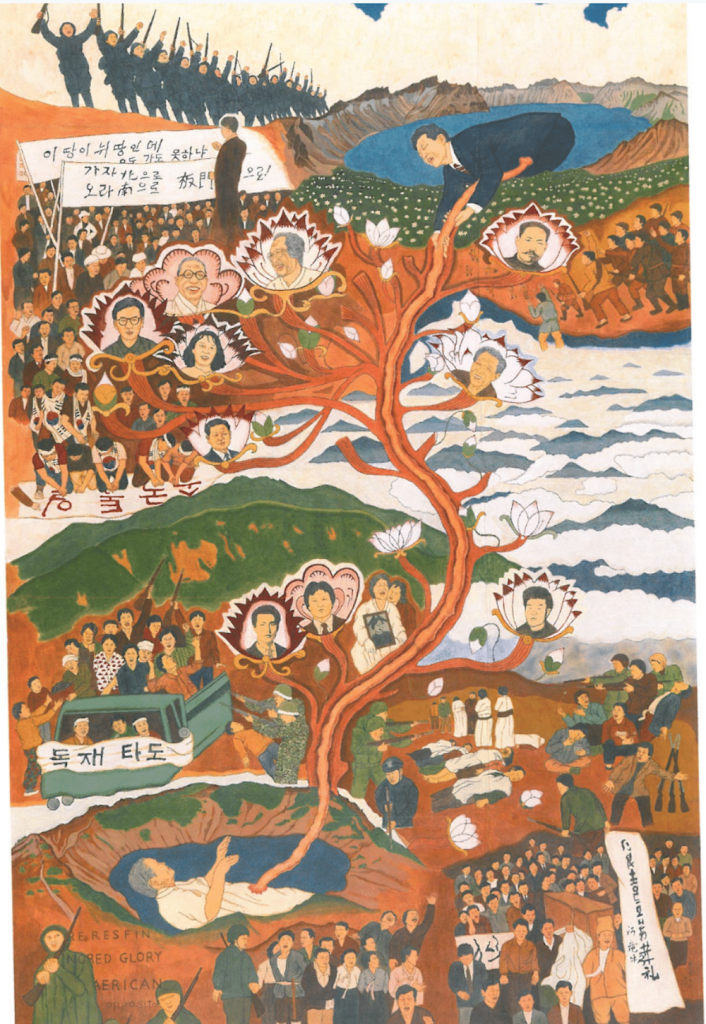
Sangho Lee, Long for Korean Reunification, 2014, acrylic on fabric, 274 x 179 cm
Sangho Lee, Long for Korean Reunification, 2014, acrylic on fabric, 274 x 179 cm

Gwangju-based artist Sangho Lee was a vital figure of the Gwangju Democratization Struggle in the 1980s, voicing his criticism against South Korea’s military dictatorship. In 1985, he formed the Visual Media Research Society, which was reorganized in 1986 into the End of the Land group and produced numerous prints, scroll paintings, and elegies spreading anti-dictatorship and pro-democratic sentiments. During his senior year at Chosun University in 1987, Lee created the scroll painting To the New Days of Reunification at the Foothills of Mountain Baekdu with his peers, for which he was accused of representing North Korea’s national flower and arrested for violating the national security law, being the first artist to be imprisoned under this law. While in prison, Lee was severely tortured and has since suffered psychological trauma. Despite this, he was steadfast in his belief in art’s capacity to resist power and to share narratives of impoverished and agitated communities, including workers and farmers. Continuing his political struggles through artistic means, his practice has come to advocate for the unification of Korea.
Anatomical Chart of Authority (1989) and The Map of Hell (2000) manifest Lee’s critical views of South Korea’s pro-American agenda of economic and military interests and condemn the politics of military aggression. Other works in the exhibition, such as Anti-Iraq War (2003) and Long for Korean Reunification (2014), borrow elements from Buddhist paintings of the Goryeo Dynasty and are influenced by the artist’s academic background in Buddhist art and his two temporary renunciations of the secular world and entry into priesthood. Amitābha, the Buddha who leads the deceased to the Paradise of the West, often appears in his paintings, a reference to the reconciliation of the Earth and the heavens. Long for Korean Reunification envisions South and North Korea as one land connected by an umbilical cord, with the mother symbolizing the South and the son the North. The figures are surrounded by three mountains—Halla of South Korea, Baekdu of North Korea, and Mudeung in the center—along with historical figures related to pivotal events and movements in Korea’s struggle for democracy: the 1948 Jeju uprising, the 1960 April 19 Revolution, the Unification Movement, and the 1980 Gwangju Democratization Movement.
Sangho Lee, Long for Korean Reunification, 2014, acrylic on fabric, 274 x 179 cm